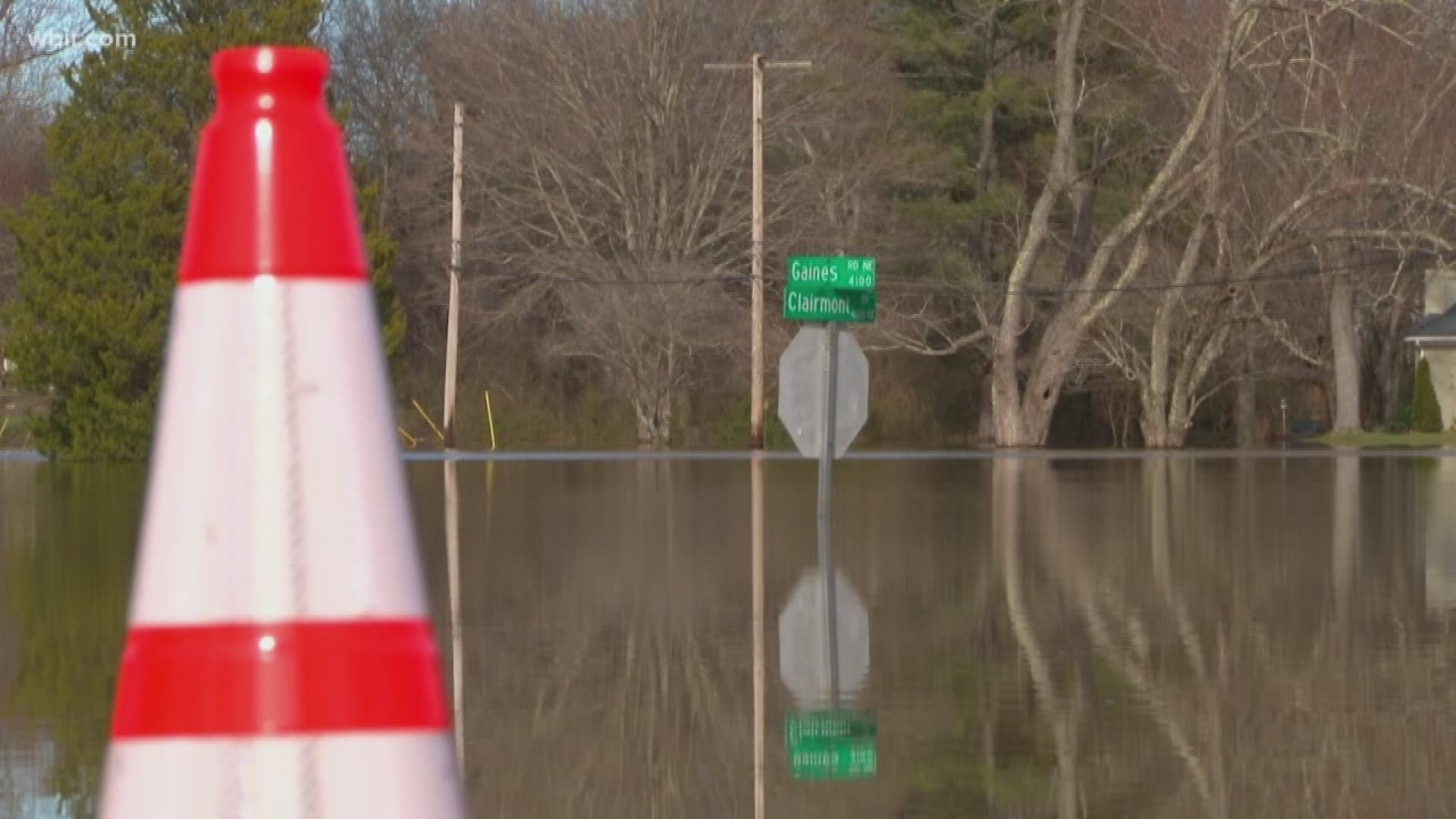The stage is set for unprecedented major flooding this spring for most of the nation, U.S. weather officials said Thursday.
More than 200 million Americans are at risk for some kind of flooding, with 13 million of them at risk of major inundation, the National Oceanic and Atmospheric Administration said in its spring weather outlook. About 41 million people are at risk of moderate flooding.
Major flooding now occurring in Nebraska, Iowa, South Dakota, Missouri and other Midwestern states is a preview of an all-too-wet and dangerous spring, said Mary Erickson, deputy director of the National Weather Service. "In fact, we expect the flooding to get worse and more widespread," she said.
RELATED: Hamblen County doesn't meet FEMA criteria for individual assistance, Morristown-Hamblen EMA says
This year's flooding "could be worse than anything we've seen in recent years, even worse than the historic floods of 1993 and 2011," she said. Those floods caused billions of dollars in damage, and officials said this year's damage in Nebraska, Iowa and South Dakota has already passed the billion-dollar mark.
Forecasters said the biggest risks include all three Mississippi River basins, the Red River of the North, the Great Lakes, plus the basins of the eastern Missouri River, lower Ohio River, lower Cumberland River and the Tennessee River.
"This is the broadest expanse of area in the United States that we've projected with an elevated risk that I can remember," said Thomas Graziano, a 20-year weather service veteran and director of the Office of Water Prediction. "Is this the perfect storm? I don't know."
A lot depends on how much rain falls in the next couple months, Graziano said, but forecasters say it will be more than average.
The Missouri River has already set records with historic flood marks measured in 30 places in Nebraska, Iowa and South Dakota, Kansas City forecaster Kevin Lao said.
The river "remains vulnerable to moderate flooding for the remainder of the spring and early summer," Lao said. "People should be prepared for major flooding along the Missouri River ... going into the future."
Most of Nebraska, except right along the Missouri River, is unlikely to see major flooding again this year, but the rest of the flooded area is still prone to more, Low said.
Several factors will likely combine to create a pulse of flooding that will eventually head south along the Mississippi: above average rainfall this winter— including 10 to 15 inches earlier this year in a drenching along the Ohio and Tennessee Valleys; the third wettest year in U.S. history; and rapidly melting snow in the Upper Midwest.
Extra rain will bring more farm runoff down the Mississippi, which will likely lead to more oxygen-starved areas in the Gulf of Mexico and likely make the summer dead zone larger than normal, said Edward Clark, director of NOAA's National Water Center in Tuscaloosa, Alabama.
It's too early for scientists to make the complex calculations to see if human-caused climate change played a role in the flooding. However, scientists said the conditions are consistent with what they expect from global warming.
In addition to the year-to-year natural variability of weather, there is a long-term, climate change-driven trend that is making extreme rainfalls even more intense, said Texas A&M University climate scientist Andrew Dessler.
RELATED: Gov. Lee signs order to enable flooding recovery efforts, FEMA to conduct damage assessments
"You can think of climate change as steroids for these rain events," he said.
University of Illinois climate scientist Donald Wuebbles, co-author of a report released Thursday on climate change and the Great Lakes, said "we have been seeing a significant increase in precipitation coming as larger events, especially in the Midwest and Northeast, over the last five to six decades." It will get worse, so flooding will get to be a bigger concern, he said.
In part of the South, it already is.
RELATED: Knox Co. flooding caused est. $32M in property damage, affected nearly 1200 homes and businesses
Major flooding is already occurring this week on the Mississippi River near several Southern cities including Arkansas City, Arkansas; Natchez, Mississippi; and Baton Rouge, Louisiana, according to river gauges and data from NOAA. Since Feb. 8, about 100 Army Corps of Engineers personnel have been monitoring levees and other flood protection in Memphis; Clarksdale, Mississippi; and Helena, Arkansas.
The swollen river has been flooding some unprotected western Mississippi communities since last month.
One Mississippi region protected by levees is also flooding. The smaller rivers there can't drain into the Mississippi River as normal, because a floodgate that protects the region from even worse flooding by the big river has been closed since Feb. 15.
Residents around Rolling Fork, Mississippi, first noticed water rising from swamps in late February. The water eventually invaded some homes in that community, about 40 miles (65 kilometers) north of Vicksburg.

